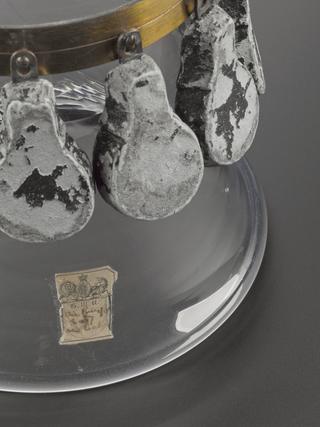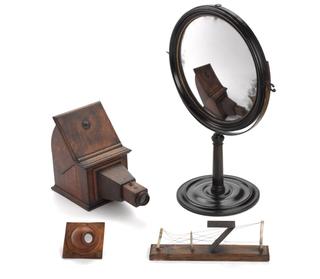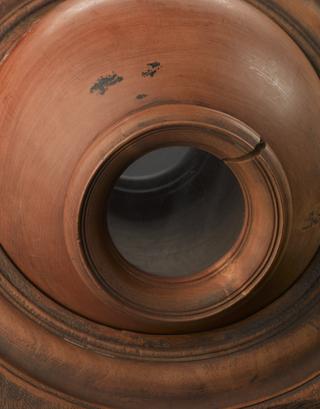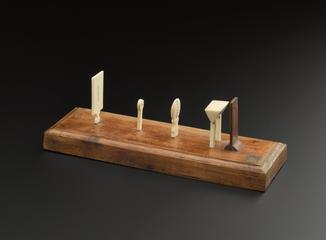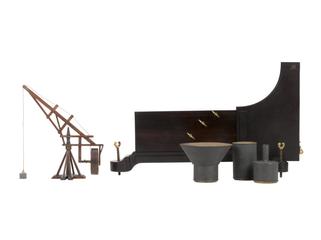
George III's glass sphere
- Made:
- 1761 in Fleet Street
- maker:
- George Adams



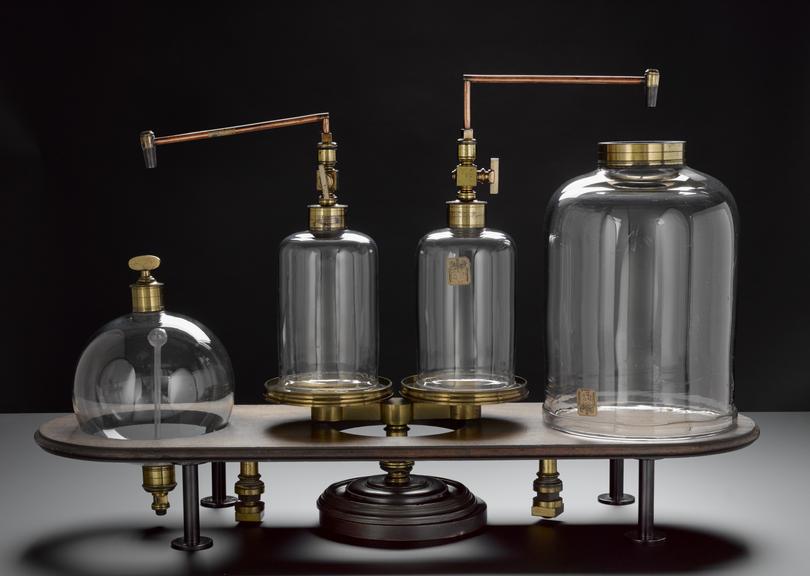

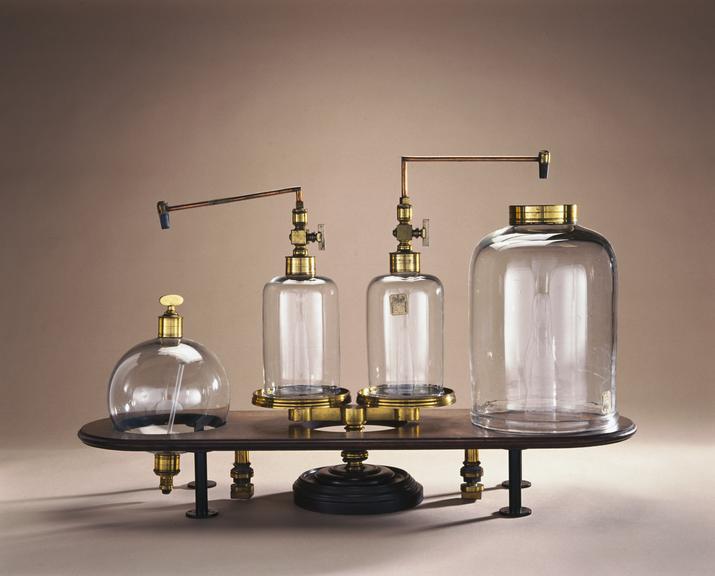
Glass sphere containing glass rod with perforated ball at end made by George Adams, Fleet Street, London, 1761.
This apparatus was made for King George III in 1761 by George Adams, very soon after he ascended the throne in 1760. It was part of Adams' pneumatics lectures and was intended to be used with the air pump. It allowed the demonstrator to compare 'airs' from different sources. Adams called the appratus 'a convenient apparatus to examine a portion of air, taken by chance or choice either in the atmosphere or in a place filled with vapours or known exhalations'. The apparatus fitted on to the air pump, acting as an attachment. Vapours from burning matter for example, filled the large glass vessel on the right. The glass sphere on the left provided clean dry air from the atmosphere. Operating the pump drew the two air samples into the central jars where they could be compared.
Details
- Category:
- King George III
- Object Number:
- 1927-1333
- Materials:
- glass, brass, paper (fibre product), cardboard and sealing wax
- Measurements:
-
overall: 335 mm x 220 mm diameter, 2.25 kg
- type:
- sphere
- credit:
- King's College, London
